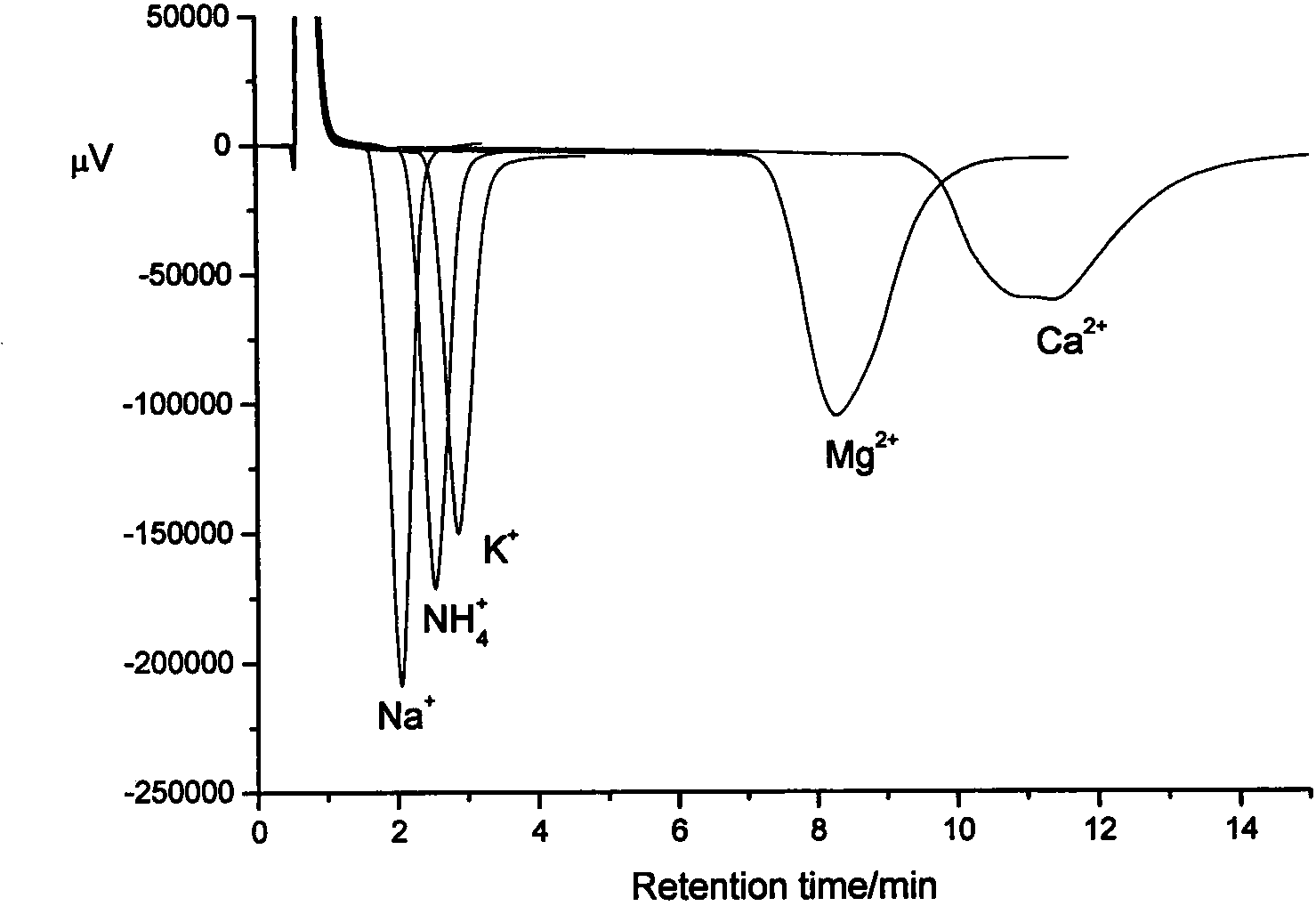Restricted access poly(3-sulfopropyl methacrylate (SPM)) modified silica gel chromatographic packing
A technology of glycerol methacrylate and ethylene glycol dimethacrylate, which is applied in the field of limited-entry poly(3-sulfopropyl methacrylate) modified silica gel chromatography packing, and can solve the problem of difficult grafting density and other problems, to achieve the effect of improving analysis efficiency and accuracy, reducing loss, and uniform grafting layer
- Summary
- Abstract
- Description
- Claims
- Application Information
AI Technical Summary
Problems solved by technology
Method used
Image
Examples
Embodiment 1
[0032] 1. Activation of Matrix Silica Gel
[0033] 10g of silica gel (particle size 10μm, pore size Specific surface area 380m 2 / g) was added to 100mL of hydrochloric acid / water (1:1, v / v) solution, stirred and refluxed at 105°C for 12 hours, filtered, washed with distilled water until neutral, vacuum-dried at 100°C, and stored in a desiccator for later use.
[0034] 2. ATRP initiator grafted on the surface of silica gel (the product is marked as Silica-In)
[0035] Take 10 g of activated and dried silica gel, add 60 ml of dry toluene, add 1.5 ml of (3-(2-bromoisobutyryl) propyl) triethoxysilane under stirring, and 2 Under protection, heat to reflux at 90°C and react for 15 hours. After the reaction is complete, the product is suction-filtered and washed three times with toluene and acetone respectively. Dry under vacuum. The silica gel (marked as Silica-In) with ATRP initiator grafted on the surface was obtained.
Embodiment 2
[0037] 1. Graft poly(3-sulfonate propyl methacrylate-co-ethylene glycol dimethacrylate) on the surface of silica gel by ATRP method Weigh the Silica-In (1.0 g) prepared in Example 1 and add it to the round bottom In the three-necked flask, add 0.62 g of 3-sulfopropyl methacrylate potassium salt (SPM), 0.26 mL of ethylene glycol dimethacrylate (EDMA), 0.15 g of 2,2'-bipyridine (BiPy), CuBr 2 0.028g and DMF / H 2 O (1 / 1, v / v) 24mL, after passing nitrogen for 10min, add CuBr0.036g, and stir the reaction at 30°C for 1 hour under the protection of nitrogen. After the reaction is completed, filter the reactant with suction, wash the product with a saturated aqueous solution of EDTA until it is colorless, then wash with water, extract it with ethanol / water (1 / 1, v / v) for 12 hours, and dry it in vacuum at 50°C for 12 hours , to obtain poly(3-sulfopropyl methacrylate-co-ethylene glycol dimethacrylate) modified silica gel material, labeled as Silica-g-p(SPM-co-EDMA). The content of sul...
Embodiment 3
[0043] The poly(methacrylic acid 3-sulfonate propyl ester-co-ethylene glycol dimethacrylate) modified silica gel material Silica-g-p (SPM-co-EDMA) synthesized in the embodiment 2, dry-loaded 50mm × In the 4.6mm i.d. stainless steel chromatographic column, the HPLC method was used to investigate the effect of this material on the inorganic cation Na + , NH 4 + 、K + , Mg 2+ and Ca 2+ separation ability. The chromatographic conditions and separation results are shown in Table 1, and the chromatographic separation diagram is shown in image 3 . Depend on image 3 It can be seen that the monovalent cations can basically be separated, and the peak shape is symmetrical; the divalent cations are well separated, which shows that the chromatographic stationary phase has good cation separation performance.
[0044] Table 1 Chromatographic selectivity and column efficiency of cross-linked poly(3-propyl methacrylate) modified silica gel for cations a
[0045]
[0046] a Chrom...
PUM
 Login to View More
Login to View More Abstract
Description
Claims
Application Information
 Login to View More
Login to View More - R&D
- Intellectual Property
- Life Sciences
- Materials
- Tech Scout
- Unparalleled Data Quality
- Higher Quality Content
- 60% Fewer Hallucinations
Browse by: Latest US Patents, China's latest patents, Technical Efficacy Thesaurus, Application Domain, Technology Topic, Popular Technical Reports.
© 2025 PatSnap. All rights reserved.Legal|Privacy policy|Modern Slavery Act Transparency Statement|Sitemap|About US| Contact US: help@patsnap.com



